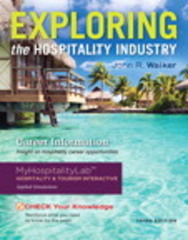Question
The organization I chose is a fictitious contemporary organization called Albatross. They are facing the issue of declining employee morale and collaboration amid recent restructurings.
The organization I chose is a fictitious contemporary organization called Albatross. They are facing the issue of declining employee morale and collaboration amid recent restructurings. The two Organizational Development (OD) theories I selected are Action Research and the McKinsey 7-S model. Action research is a systematic and collaborative approach that involves identifying a problem, planning, and implementing a change, observing results, and reflecting on the process (Anderson & Zaballero, 2015). McKinsey's 7-S model is a framework developed to analyze and align various elements within an organization (Anderson & Zaballero, 2015). The seven factors are strategy, structure, systems, shared values, skills, style, and staff (Anderson & Zaballero, 2015).
The separate phases of action research are problem, contract, diagnosis, feedback, joint diagnosis, joint action planning, action, and data gathering (Anderson & Zaballero, 2015). While these phases may be utilized in order, the practitioner can adjust and move the phases as each organizational issue is different (Anderson & Zaballero, 2015). In this organization's case, they have identified the problem as declining morale and reduced collaboration. In the contract phase, the organization and the practitioner meet to determine if they can help with the identified problem (Anderson & Zaballero, 2015). If so, they contract with the OD practitioner. The diagnosis phase is utilized to gather data to determine the causes of the identified problem (Anderson & Zaballero, 2015). Feedback is when the data is provided to the members of the organization for review which leads to the next phase of joint diagnosis (Anderson & Zaballero, 2015). Joint diagnosis is when the data is presented to the members for further diagnosis of the issue resulting in the next step of joint action planning (Anderson & Zaballero, 2015). Joint action planning is when the practitioner and the client come together to determine the best course of action moving forward to help the organization (Anderson & Zaballero, 2015). The next step is action, by implementing the plan which was determined by the client and the practitioner (Anderson & Zaballero, 2015). Additionally, this step utilizes continuous monitoring and feedback so that if additional action or changes need to be made, they can be conducted promptly (Anderson & Zaballero, 2015). The next is data gathering, in this step, the organization and practitioner analyze more data to determine the next step (Anderson & Zaballero, 2015). As the need to always be revolutionizing OD the action research was updated by Dr. Burke (Anderson & Zaballero, 2015). This updated version is designed to be continually evolving by utilizing phases called pre-launch, launch, and post-launch (Anderson & Zaballero, 2015).
Provide an in-depth responseinclude one of the following:
- Ask a probing question.
- Share an insight from having read your colleague's posting.
- Offer and support an opinion.
- Validate an idea with your own experience.
- Make a suggestion.
- Expand on your colleague's posting.
Note: Support responses with specific references
Step by Step Solution
There are 3 Steps involved in it
Step: 1

Get Instant Access to Expert-Tailored Solutions
See step-by-step solutions with expert insights and AI powered tools for academic success
Step: 2

Step: 3

Ace Your Homework with AI
Get the answers you need in no time with our AI-driven, step-by-step assistance
Get Started


